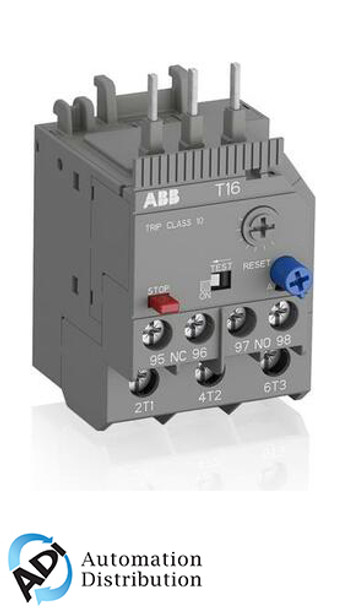Description
The ABB T16-7.6 thermal overload relay is an economic electromechanical protection device for the main circuit. It offers reliable and fast protection for motors in the event of overload or phase failure. The device has trip class 10. Further features are the temperature compensation, trip contact (NC), signal contact (NO), automatic- or manual reset selectable, trip-free mechanism, STOP function and a trip indication. The overload relays are connected directly to the mini contactors or block contactors. Single mounting kits are available as accessory.
Description : TOL, CLS. 10, CURR. RANGE 5.70...7
Application / Internal Function
The thermal overload relays are three pole relays with bimetal tripping elements (1 per pole). The motor current flows through the bimetal tripping elements and heats them directly and indirectly. In case of an overload (over current), the bimetal elements become bent as a result of the heating. This leads to a release of the relay and a change of the contacts switching position (95-96 / 97-98). The contact 95-96 is used to control the load contactor. The overload relays have a setting scale in Amperes, which allows the direct adjusting of the relay without any additional calculation. In compliance with international and national standards, the setting current is the rated current of the motor and not the tripping current (no tripping at 1.05 x I, tripping at 1.2 x I; I = setting current). The relays are constructed in way that they protect themselves in the event of an overload. The overload relay has to be protected against short-circuit. The appropriate Short-circuit protective devices are shown in the table.












